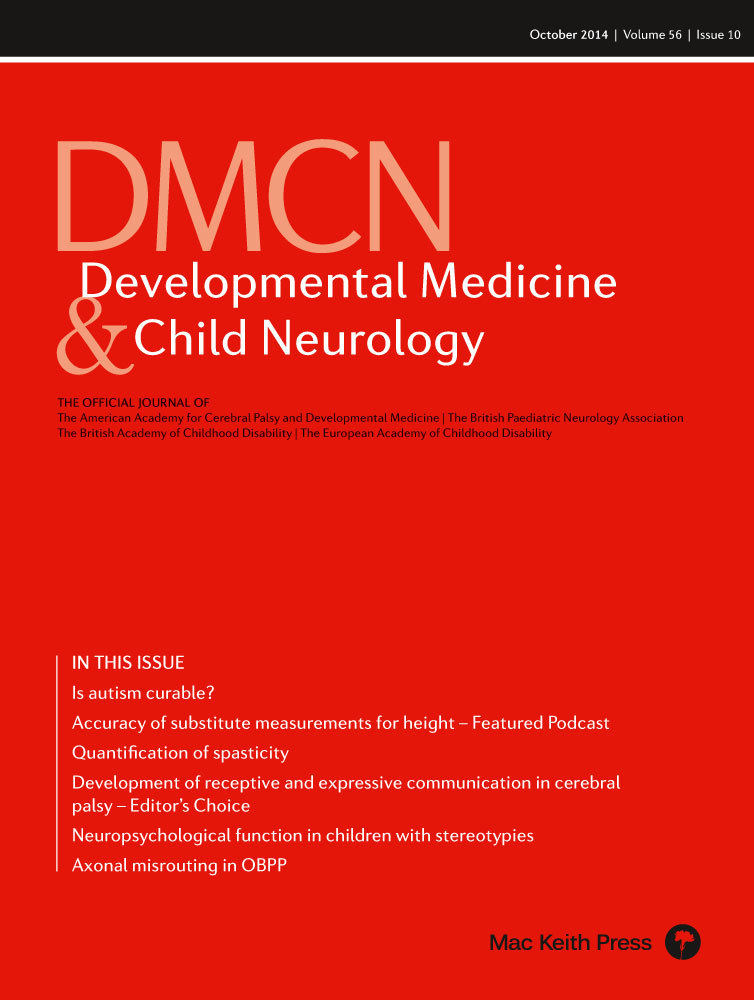Discrepancy between strength and function in adults with obstetric brachial plexus lesions
Abstract
This commentary is on the original article by Anguelova et al. on pages 984–989 of this issue.
Those who work with children with obstetric brachial plexus lesions ([OBPL]; neonatal brachial plexus palsy in the US) often see children who have more strength on examination of isolated muscles than they exhibit in spontaneous play or other activities. This pattern continues to be seen in adolescents and adults with OBPL. How can this be? The article by Anguelova et al. explores one possible area that might contribute to this phenomenon: motor axonal misrouting, whereby outgrowing motor axons reinnervate a muscle or muscles other than the original target muscle. When the ‘new’ fibers that are innervated are antagonist muscles, this may account for the co-contraction so often seen in patients with OBPL, especially in the biceps and triceps muscles.
Anguelova et al.1 report on a study of 17 adults with conservatively managed OBPL and 16 control participants. They assessed passive and active range of motion, muscle strength of the deltoid, biceps, and triceps muscles, and the Mallet aggregate and subscores for the participants with OBPL but not the controls. They placed recording and stimulating electrodes on ten muscles innervated by nerves of the brachial plexus of the participants with OBPL and the control participants, then stimulated one muscle at a time while simultaneously recording from the other nine muscles. In the control group they found misrouting in one participant in whom four muscles showed misrouted responses. In the adults with OBPL they found misrouted responses when stimulating seven of ten muscles (but never when stimulating the triceps, latissimus, or thenar muscles) in a variable number of participants. The motor misrouting was most frequently found when stimulating the biceps, deltoid and brachioradialis muscles, which are innervated through the C6 and C7 roots. Most frequent misrouting responses were recorded from the brachioradialis, triceps, and extensor carpi radialis muscles. The misrouting score for each participant with OBPL and control participants was the sum of muscles that showed a recorded misrouted response. The median misrouting score in participants with OBPL was 4, compared to 0 in the control group (p<0.001). They interpreted that in OBPL there is often extensive neuroma formation which forms the substrate for misrouting of axons.
This article raises the question whether surgical management of OBPL in which the neuroma is removed and nerve grafts are placed would decrease the incidence of misrouting. It would be interesting for them to repeat this study in participants who have undergone such a procedure to see if the surgery results in less misrouting (and, by extrapolation, in better function.)




